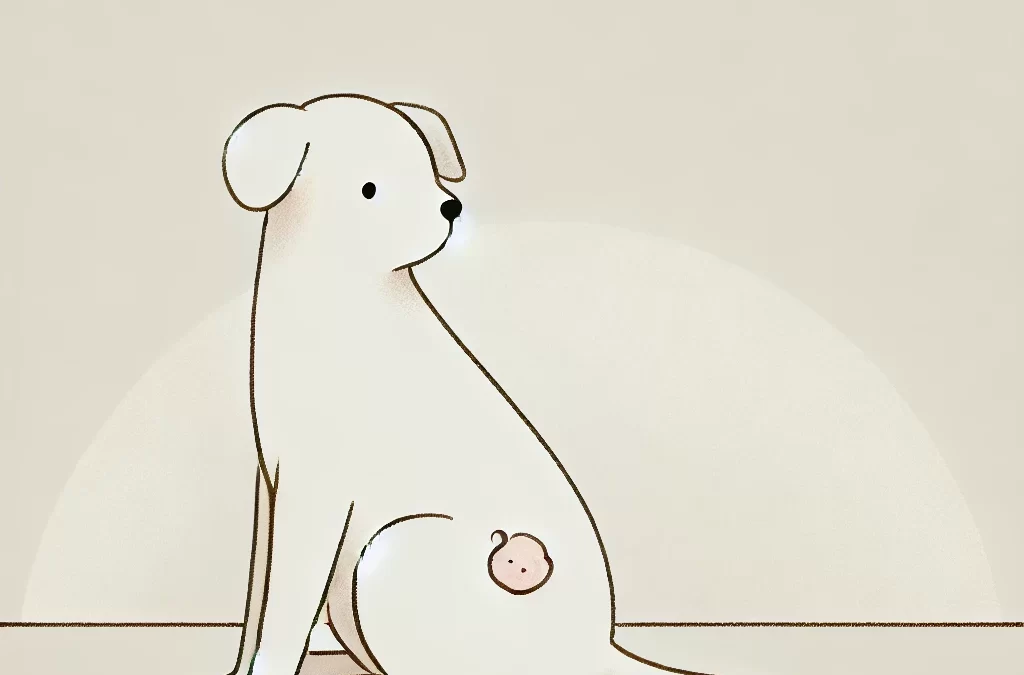Wenn Sie bei Ihrem Hund einen Knoten oder eine Beule entdecken, kann das ein beunruhigendes Erlebnis sein, aber nicht alle Wucherungen sind gefährlich. Zysten zum Beispiel kommen bei Hunden relativ häufig vor und sind oft gutartig. Allerdings stellt sich die Frage: Verschwindet eine Hundezyste von selbst? Lassen Sie uns dieses Problem aufschlüsseln und die Arten, Ursachen und natürlichen Ansätze zur Behandlung von Zysten untersuchen sowie wann ein professioneller Eingriff erforderlich ist.
Was genau ist eine Zyste?
Eine Zyste ist ein geschlossener Sack, der mit Flüssigkeit, halbfestem Material oder Luft gefüllt ist. Sie bilden sich oft unter der Haut und können unterschiedlich groß sein. Zysten bei Hunden werden normalerweise durch verstopfte Haarfollikel, Traumata oder Infektionen verursacht. Die meisten Zysten sind harmlos, aber das Verständnis ihrer Natur ist der Schlüssel zur Gewährleistung der Gesundheit Ihres Hundes.
Arten von Zysten bei Hunden
- Talgzysten: Entstehen durch verstopfte Talgdrüsen und sind die häufigste Art. Sie erscheinen oft als kleine, langsam wachsende Knoten und können mit der Zeit platzen.
- Follikuläre Zysten: Steht im Zusammenhang mit Verstopfungen der Haarfollikel, oft aufgrund von Reizungen oder genetischer Veranlagung.
- Echte Zysten: Diese sind von einer Epithelauskleidung umhüllt. Sie sind selten, aber deutlich zu erkennen.
- Abszesse: Obwohl es sich technisch gesehen nicht um Zysten handelt, handelt es sich dabei um infizierte, mit Eiter gefüllte Knoten, die oft mit Zysten verwechselt werden.
Wird es sich von selbst lösen?
Die Antwort hängt von der Art der Zyste und der zugrunde liegenden Ursache ab:
- Talgzysten: Diese können von selbst platzen und entleeren, sie füllen sich jedoch oft wieder, wenn der Beutel nicht vollständig entfernt wird.
- Follikuläre Zysten: Diese verschwinden selten ohne Eingriff und können mit der Zeit zunehmen.
- Infizierte Zysten oder Abszesse: Erfordern eine sofortige Behandlung, um Komplikationen vorzubeugen. Sie heilen nicht von selbst.
Während sich die Größe mancher Zysten vorübergehend verringert, kommt es selten vor, dass sie sich vollständig von selbst auflösen.
Natürliche Ansätze zur Behandlung von Zysten
Wenn die Zyste klein und schmerzlos ist und Ihr Tierarzt bestätigt hat, dass sie gutartig ist, kann eine natürliche Behandlung in Betracht gezogen werden. Diese Mittel zielen darauf ab, Entzündungen zu reduzieren, Infektionen vorzubeugen und die Hautgesundheit zu fördern:
1. Warme Kompresse
Eine warme Kompresse kann die Durchblutung in dem Bereich fördern und so dazu beitragen, dass die Zyste auf natürliche Weise abläuft. Verwenden Sie ein sauberes, in warmes Wasser getauchtes Tuch und legen Sie es zweimal täglich 5–10 Minuten lang sanft auf die Wunde.
2. Kurkumapaste
Die entzündungshemmenden und antimikrobiellen Eigenschaften von Kurkuma machen es zu einem Favoriten in der ganzheitlichen Tierpflege. Mischen Sie Kurkumapulver mit Kokosöl zu einer Paste und tragen Sie diese auf die Zyste auf (mit Zustimmung des Tierarztes).
3. Rizinusöl
Rizinusöl ist reich an Ricinolsäure und kann Entzündungen lindern. Tupfen Sie eine kleine Menge mit einem Wattestäbchen auf die Zyste.
4. Ernährungsumstellung
Eine Ergänzung der Ernährung Ihres Hundes mit Omega-3-Fettsäuren (Fischöl) und Antioxidantien kann die allgemeine Hautgesundheit verbessern. Sorgen Sie dafür, dass die Ernährung Ihres Hundes reich an Vitamin E und C ist, um die Gewebereparatur zu unterstützen.
5. Pflanzliche Heilmittel
Ringelblumen- und Kamillenkompressen wirken beruhigend und können die Heilung fördern.
Wann sollte man einen Tierarzt aufsuchen?
Während Naturheilmittel bei der Behandlung kleiner, gutartiger Zysten wirksam sein können, erfordern manche Situationen professionelle Hilfe:
- Schnelles Wachstum: Wenn die Zyste schnell größer wird, könnte dies auf ein zugrunde liegendes Problem hinweisen.
- Schmerzen oder Beschwerden: Wenn Ihr Hund Anzeichen von Schmerzen zeigt, Berührungen vermeidet oder die Stelle zwanghaft leckt.
- Infection: Rötung, Schwellung, Erwärmung oder nässender Eiter sind Anzeichen einer infizierten Zyste.
- Mehrere Klumpen: Könnte auf ein systemisches Problem oder eine andere Erkrankung hinweisen.
- Standortbedenken: Zysten in der Nähe von Gelenken oder lebenswichtigen Organen sollten umgehend untersucht werden.
Ein ausgewogener Ansatz: Die Kombination von Natur und Wissenschaft
Eine Hundezyste ist zwar oft harmlos, muss aber sorgfältig beobachtet werden. Die Kombination natürlicher Heilmittel mit tierärztlicher Anleitung sorgt für das Wohlbefinden und die Sicherheit Ihres Hundes. Denken Sie daran, dass Zysten selten von selbst vollständig verschwinden, daher ist eine proaktive Behandlung unerlässlich.
Das Fazit? Keine Panik, wenn Sie bei Ihrem Hund eine Zyste entdecken. Beobachten Sie stattdessen ihre Größe und ihr Verhalten, wenden Sie bei Bedarf natürliche Therapien an und konsultieren Sie Ihren Tierarzt, um ernstere Erkrankungen auszuschließen. Mit einem ausgewogenen und informierten Ansatz können Sie dafür sorgen, dass Ihr pelziger Freund gesund, glücklich und erfolgreich bleibt.















